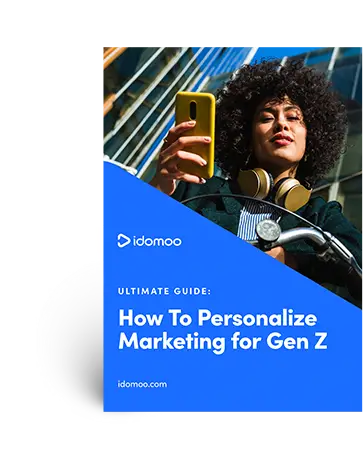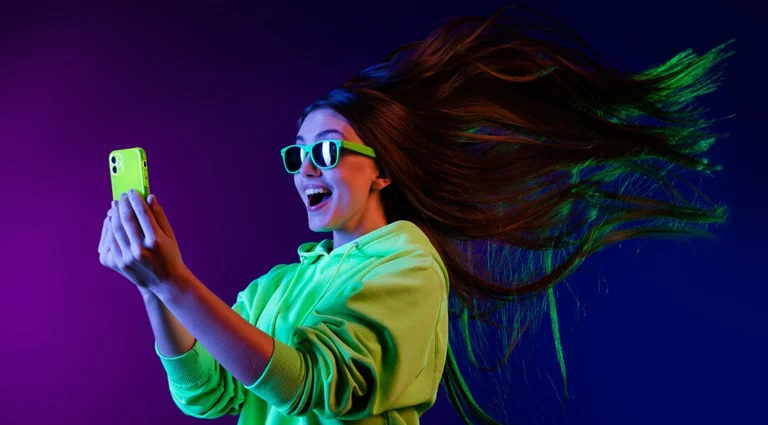Did you know that 73% of consumers are willing to share their data with brands if it means a personalised experience? According to our latest State of Video Technology report, more and more people — particularly Gen Z and high earners — are placing high value on personalisation. According to them, this is because:
- It simplifies things and is easier to understand.
- It makes them feel valued as an individual.
- It saves them time because the information is relevant.
- It enables them to discover new things of interest.
In short, personalisation improves and elevates the customer experience. But don’t think it’s just about slapping a customer’s name onto a generic email. We’re talking about hyper-personalisation — the next level of tailored experiences that goes beyond basic data.
Post on
According to Deloitte, when done right, “hyper-personalisation can deliver 8x the return on investment on marketing spend and lift sales by 10% or more.” Meanwhile, a study by Gartner revealed that brands risk losing 38% of their customers because of poor personalisation efforts.
But what exactly is hyper-personalisation? Think of it as an advanced form of traditional personalisation, in which we leverage the latest developments in tech and data analytics to create user experiences that are truly one in a million.
Interested? Let’s explore the ins and outs of hyper-personalisation and how it’s revolutionising the way brands connect with their audience.
Hyper-Personalisation vs. Traditional Personalisation
Personalisation isn’t a new concept.
We’ve all received those emails addressing us by name or full of product recommendations that seem to be plucked right from our browsing history. These are classic instances of traditional personalisation. While a few data points may be used to tailor the interaction to an individual customer, much of the content still relies on broader customer segmentation strategies.
In other words, while your name may be featured, the message itself is crafted for a segment of people like you rather than just you.
So what sets hyper-personalised marketing strategies apart?
Hyper-personalisation involves much more customer data and uses advanced technologies like artificial intelligence and machine learning to offer ultra-specific, one-of-a-kind experiences that are tailored to individual preferences.
To achieve hyper-personalisation, companies first collect data from various sources, such as their CRM or customer interactions on their website, mobile app and more. This data may include demographics, behavioral data, purchase history and even contextual data like the customer’s location or the device they’re on.
Following real-time data collection, sophisticated algorithms come into play, identifying patterns and trends crucial for personalisation. Automation serves as the backbone, making it possible for brands to craft highly personalised messages and content at scale and in real time.
Let’s use Spotify as an example. The streaming giant is great at personalising its music recommendations. If your listening habits signal that you love Beyoncé, Spotify will suggest similar artists, albums and songs that align with your taste. It’s a classic tactic that makes your experience on the app that much more personal.
The thing is, though, those recommendations aren’t necessarily unique to you. There’s a good chance that other users who love Beyoncé also received similar suggestions. It’s a clear example of traditional personalisation, in which a simple data point is used to make an interaction more relevant for the customer but not technically bespoke.
Now, consider Spotify Wrapped. At the end of every year, the app sends millions of users a shareable recap of their streaming history. Full of interesting stats like hours streamed, their top artists and the songs they listened to most, Spotify Wrapped is totally unique to each person, spurring users to eagerly share their one-of-a-kind music tastes and habits on social media.
It’s top-tier hyper-personalisation at work, showing how a brand can leverage personal data to serve up content that resonates with you — and only you.
Hyper-Personalisation in Action
Hyper-personalisation strategies aren’t unique to Spotify. Plenty of brands across industries like healthcare, travel and gaming have launched similar year-in-review marketing campaigns in order to strengthen customer relationships and improve customer retention.
Assassin’s Creed, for instance, celebrated its 15th anniversary by sending out Personalised Videos to its players, each one a unique combination of viewer-specific stats, video creative and even language. Check it out below.
Whether it’s through a personalised onboarding video or a push notification that proactively addresses a potential customer service concern, hyper-personalised experiences can be incorporated into many different touchpoints in the customer journey.
Want to influence customer behavior and boost conversion rates? Hyper-personalised content can help with that too. Take BBVA’s creative approach to encouraging pension contributions, which involved showing viewers a “message from their future selves.”
Notice how the Personalised Video includes accurate pension information and even includes creative elements, like the actors and voiceovers, that reflect the viewer’s identity. These hyper-personalised details made all the difference, leading to a 78% increase in long-term savings and high viewer engagement.
Why Does Hyper-Personalisation Matter?
Effective hyper-personalisation marketing isn’t just about making customers feel special. It’s about adding genuine value to their lives. It saves them time by cutting through the noise and presenting them with content that’s not only relevant but resonates.
Customer satisfaction soars when every touchpoint feels tailor-made. From personalised emails that make you feel valued to custom-tailored videos that answer questions before they’re even asked, it’s all about anticipating and exceeding demands. By addressing customer needs so precisely, hyper-personalisation builds trust and, ultimately, improves customer loyalty.
The benefits of hyper-personalisation are clear. It encourages customer engagement by delivering relevant and valuable content. It builds loyalty by showing that you understand and value each customer’s unique circumstances. And, most importantly, it creates meaningful connections that keep customers coming back for more.
Need Some Inspiration?
At this point, it’s safe to say that hyper-personalisation isn’t just some digital marketing buzzword. A real game-changer in the world of CX and marketing communications, hyper-personalisation helps brands ensure their efforts are data-driven and a true value-add for their audience.
Looking for some inspiration on how you can level-up your personalisation strategy? Check out this roundup of hyper-personalisation examples from 7 savvy brands.




